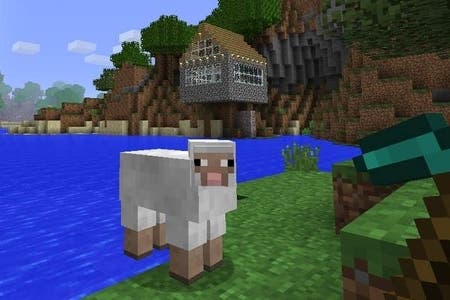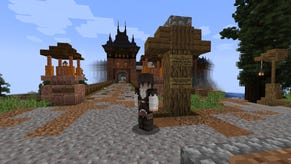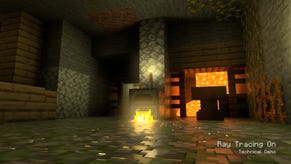Digital Foundry vs. Minecraft Xbox 360 Edition
Craftwork.
From day one, the outright simplicity of Minecraft's core design has been at the heart of its success. Whether you're a modder or a budding block architect, the underlying engine is very upfront with its mechanics, making it easy for just about anyone to understand, to pick apart, and ultimately to make their own.
It's easy to assume a game of this nature would make any platform jump with relative ease. On task to find out whether this was actually the case was Dundee-based 4J Studios, the team that went the extra mile for the feature-rich conversion of Perfect Dark on XBLA, and which is now dead-focused on updating Minecraft 360 Edition to match the features available on PC. Or at least, as close to it as Microsoft's regulations will allow.
4J's senior technology officer Paddy Burns spoke to us about the order of priority for this kind of project. It's a game which can expand outwards in a number of ways, but the base technology used on console is sound. As it stands right now, the 360 code weighs in with a 156MB download, and much like the Pocket Edition available for Android, the Java code of the PC version has been eschewed in favour of C++.
The look and feel of the game is essentially identical to what you've seen before, with the procedural generation of the world, its smooth lighting and the physics engine all entirely intact. On threading this reworked engine to work more efficiently with the 360's tri-core CPU, Paddy Burns notes that a balance had to be struck between these rendering processes and Minecraft's crucial networking features.
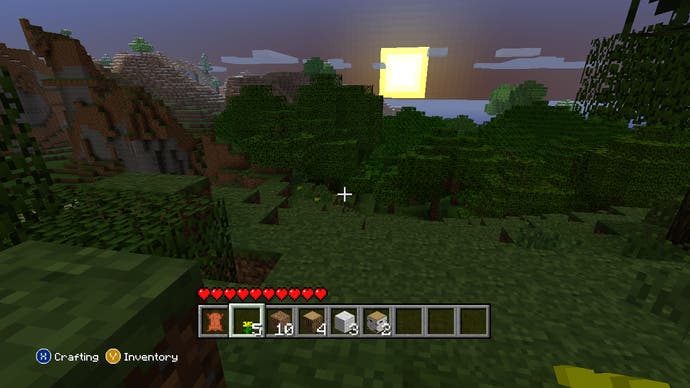

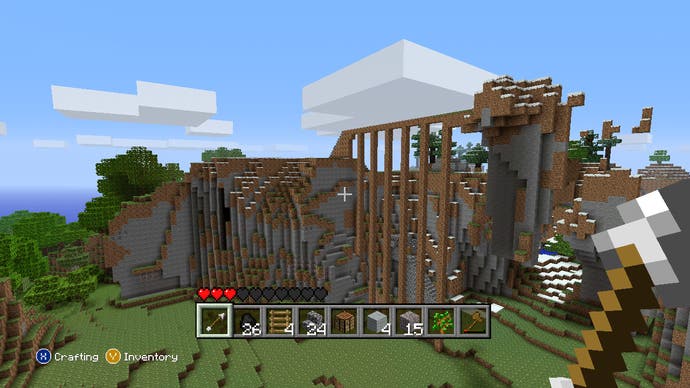
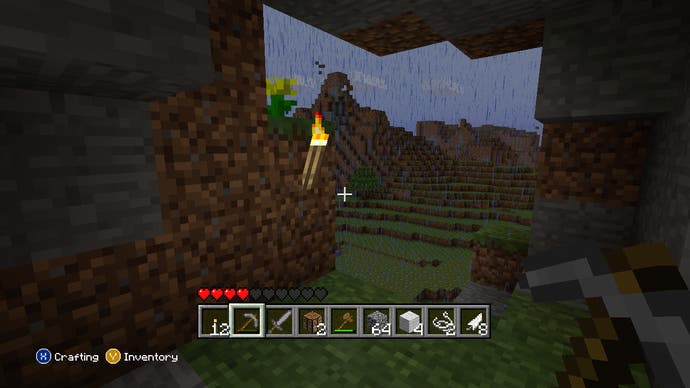
"Running both server and client on the same machine was a challenge for 4J, who hived off the tasks to separate cores of the 360's Xenon tri-core CPU."
"The most obvious aspect of this is that we've been able to run the server and client on separate cores," Burns says.
"We've also been able to separate out the task of generating render data for the landscape into another simultaneous thread, which has been critical in maintaining a smooth frame-rate, as the processing load is quite sporadic depending on [which] chunks are regenerated. Some of the world-generation is split across cores to optimise level-creation times."
Generating these massive worlds can put great demands on the console, with new chunks of terrain streaming across the horizon with every few steps. In this case it's not the 360's CPU that proves to be the limiting factor, but rather the console's relatively meagre 512MB pool of unified RAM.
"We approached the problem with the aim of making the frame-rate as smooth as possible and the view distance as large as possible," Burns explains.
"There is obviously a finite limit to memory on the Xbox and the base system has no HDD. Add the complication of running both the server and up to four clients on the same Xbox, and it's obvious that some limits would need to be applied. To maximise the use of the available resources on the Xbox, we have added systems to the game to be able to share data for the worlds between client and server, as a large percentage of the total memory used by the game is in the raw block data for the environments."
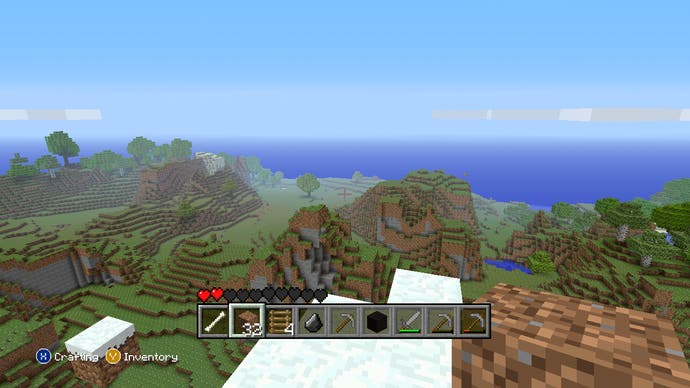

Such restrictions have meant that worlds generated on 360 are currently limited to 1024x1024 blocks, with an estimated overall vertical axis of 128 (the previous standard for PC). We're assured that this is one of the big focuses of improvement for future updates. By comparison to the PC version's infinite stretches of land rolling out in any horizontal direction, this cuts into the sense of adventure slightly, though creative minds still have vast volumes of sand in their box to play with for now.
On Updates, Texture Packs and Mods
Many updates are planned, of course, and they're set to evolve the game in a number of ways, with the eventual goal being parity with the PC's current build. This is set to rectify the main criticism - that this version is based on last year's beta revision 1.6.6, with no Creative mode available, while PC users are now playing version 1.2.5 of the official release.
"We're having some fun with pistons right now, and I'm looking forward to the 1.8.2 changes - there are a lot of them! I think the addition of the Creative mode is going to make a lot of people happy," Burns says on the upcoming 360 upgrades.
For those solely interested in playing the role of architect rather than a resource scavenger, this news comes as something of a relief. According to patch revision notes leading up to 1.8.2, this update reprises many of the features currently missing that provide Minecraft PC a more conventional "game-like" sense of progression, such as the food and XP meters, wandering NPCs, and occasional villages dotted around the world.
Mod support and texture packs are also two major areas that are heavily discussed in regards to the 360 Edition. The latter is upcoming at no extra cost alongside extra player skins, but to what extent any mods will be accessible (or truly fan-made) without constant regulation from Microsoft remains to be seen.
"Downloadable skins and possibly texture packs will be added to the Xbox 360 version but clearly mod potential on this version is limited owing to Microsoft's unwillingness to support user-generated content."
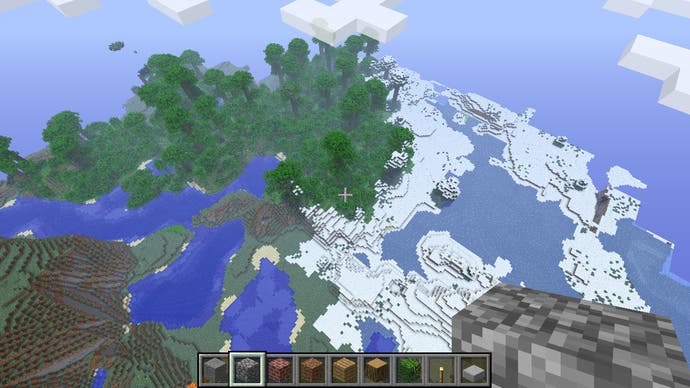

As is often the case on PC, anything goes; it's possible to add anything from tornadoes, to portal guns, steam-powered vehicles or sloped surfaces into the mix, most at the swap of a .jar file. Some can turn the game into an elaborate ecology sim, with extensions like "Nature Overhaul" allowing trees and plants to spread seeds and reproduce dynamically over fertile soil blocks. Otherwise, experimenting with the game's code has been integral to the evolution of the game itself, with mods such as Hippoplatimus' Piston block proving such a game-changer that it found its way into the official release.
On the subject of mods, Burns paints an uncertain picture of whether we'll see this represented at quite the same level. Cherry-picking the weirder and more wonderful mods for general consumption on 360 could be a more feasible approach - even if it doesn't allow 360 players to participate in development directly, it would at least allow players to enjoy the fruits of the mod community's labour.
"We are looking at adding support for skins and possibly texture packs at the moment, and we expect to have downloadable skin packs to begin with soon," he says. "Mod support is a difficult thing to provide on a console, but we do plan to add Xbox-specific content a little further down the road, and we will be interested in hearing views from the community on what they would like to see."
When it comes to the frequency of these updates, the reality of working on a closed platform with Microsoft's certification processes clearly has an influence - certainly compared to the gradual, iterative popular on PC.
"Of course everyone would like to see updates as quickly as possible, but Xbox gamers tend to be a little bit less forgiving than the PC community when it comes to bugs in the content, so Microsoft needs to ensure that any updates are thoroughly tested. This does mean updates take a little longer than people would like."
Mining and Crafting with Performance in Mind
All the upcoming extra features and optimisations are welcome, but they build on a sturdy day-one foundation as far as engine performance goes. The setup is fairly straightforward: Minecraft 360 Edition runs with a 1280x720 framebuffer, allowing it to deliver an unfaltering 60FPS in single-player alongside some respectable draw distances. Similar to the vanilla PC version though, this is rendered with no anti-aliasing in effect at all, making for some edges that can stick out for their sharpness. Here, we put the frame-rate under the magnifying glass to see if it wavers even once:
"Single-player Minecraft on console runs at a sustained 720p60 with no anti-aliasing - surprising bearing in mind the lo-fi textures and basic geometry."
A solid 60FPS is the order of the day, with v-sync also constantly engaged. In this case, it's surprising to find that a native 1920x1080 resolution mode is not supported for those that use the setting in the 360 dashboard - perhaps a concession made in order to optimise performance or keep as much RAM as possible available for the game. Whether we take to the darkened caves with torches to hand, or travel up the mountains for a panoramic view of the world, we're hard-pressed to bring the frame-rate down in single-player.
Regarding image quality, 4J Studios' decision to solely adopt the 720p standard with no AA does leave the image looking a bit rough at points. When asked whether post-processing methods such as Fast Approximate Anti-Aliasing (FXAA) were considered to prevent jaggies cropping up, Burns' justification for leaving it aside is two-pronged.
"We did investigate implementing this but decided against it due to both technical reasons, and because of the change in the visual style," he explains.
For a game which takes pride in a simple, stark and pixellated aesthetic, it's possible that lower-quality implementations of FXAA could have blurred over the image over too aggressively - particularly on elements such as textures - but the omission of hardware MSAA is a little mystifying (perhaps down to RAM considerations).
Clearly, the focus for the 360 Edition was instead set squarely on maintaining the graphical bells and whistles of the PC version. Draw distances are respectably far-flung, with the blue hue on the horizon being only slightly more apparent than it is on PC. Also to its credit is the fact that the "Smooth Lighting" option is enabled for console, making for less obtrusive gradients in the lighting across surfaces when the sun edges past overhead. Also included in the lighting engine is a pass of ambient occlusion, allowing pockets of darkness to spread to corners and edges in torch-lit caves.
"View distance on the 360 version of Minecraft is equivalent to the normal setting on PC and it is entirely consistent between single-player and all multiplayer modes available in the game."
With all things in the renderer being close to equal, the 360 Edition does happen to distinguish itself from other versions with one major feature: drop-in four-player split-screen. This is only available when HD resolutions are set on the console, and allows up to four players to play off one box, with the ability to also link up with a further four players online.
Without the breadth of community features available on PC, factoring this feature early on in development in order to match the playing habits of console users makes sense.
"Four-player split-screen is something I've always loved from countless hours playing GoldenEye on the N64, and having previously implemented it for Perfect Dark XBLA, I put this in our initial proposal to Mojang," reveals Paddy Burns.
"Persuading any existing game to work with four local players when it's not been designed that way is always a difficult task, but our previous experience was a big help there."
Regarding multiplayer performance, we see the 360 can be challenged when it comes to rendering several different points of view. In particular, the frame-rate dips from its target v-synced 60FPS whenever players are nearby each other and overlooking the world from a high point. This results in a stuttering transition to a locked 30FPS, which can be a little jarring, but once the switch has passed performance holds at that lower target. This is really only an issue in specific circumstances, as even with four players running around their own corner of the map 60FPS is an achievable figure.
Regardless of these hiccups, the addition of split-screen is a huge coup for the 360 version, offering Minecrafters everywhere a convenient way to turn the game into a social experience. Throughout our tests, we also notice that using this feature doesn't result in any degradation to visual quality (besides the smaller window). Draw distance for new chunks of terrain remains very close to that of singe-player.
Minecraft 360 Edition - The Digital Foundry Verdict
"Even without the multitude of engine updates and features etched in for future patches, Minecraft 360 Edition delivers the same compelling core experience which continues to transfix PC gamers."
We're given a lot of promises for the future, but what do we have right now? Even without the multitude of engine updates and features etched in for future patches, Minecraft 360 Edition delivers the same compelling core experience which continues to transfix PC gamers. Its simplicity meant that it could have manifested on console in several ways, but 4J Studios' decision to prioritise long draw distances and optimise for 60FPS strikes us as one which services overall playability - in other words, the correct one.
The absence of game mechanics introduced later on, such as the XP and food meters, makes the game feel a bit too bare bones, but it does at least tread its own path when it comes to creative play. Specifically, the addition of split-screen multiplayer is near-flawlessly integrated into the engine, with only a few frame-rate hiccups at the extremes.
Looking forward, we hope to see the 1024x1024 block limitation expanded upon, if not eradicated, and for some level of mod support to worm its way in. With the recent news that Minecraft 360 Edition has broken first-day sales records for Xbox Live Arcade, it has clearly generated enough interest to warrant extra time being put into increasing its scope and feature-set. We hope it does receive the lasting commitment from both 4J Studios and Microsoft it needs to blossom - if not into what the PC version has become, then into something instead tailored to the strengths of the 360 hardware. So far, it's making good on that promise.
